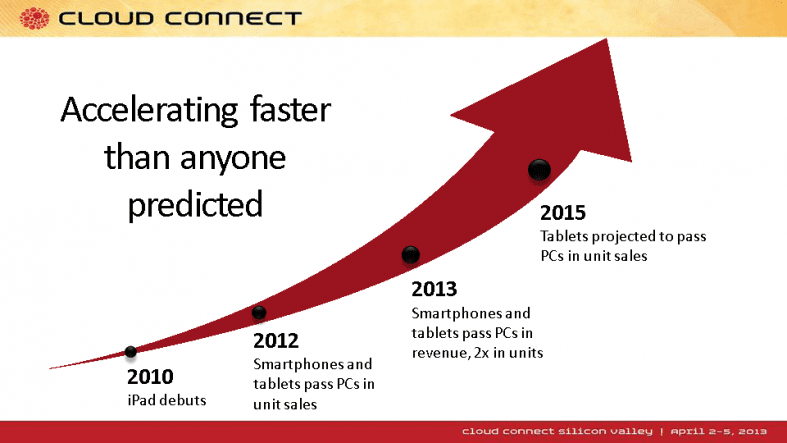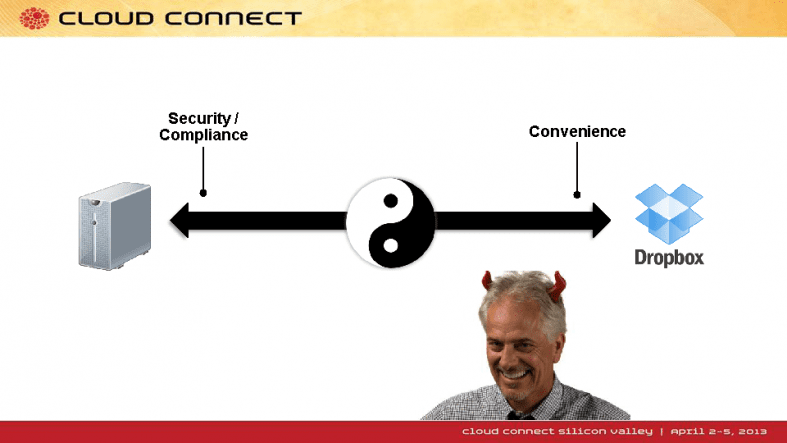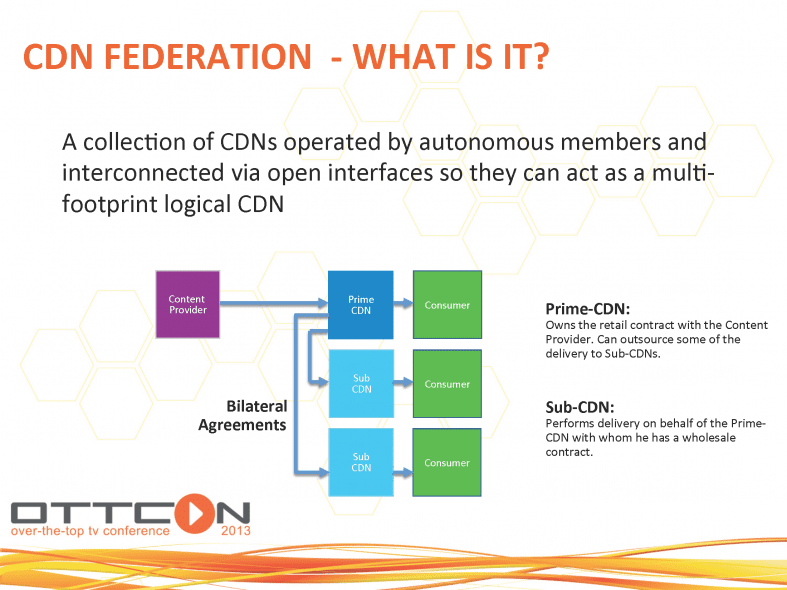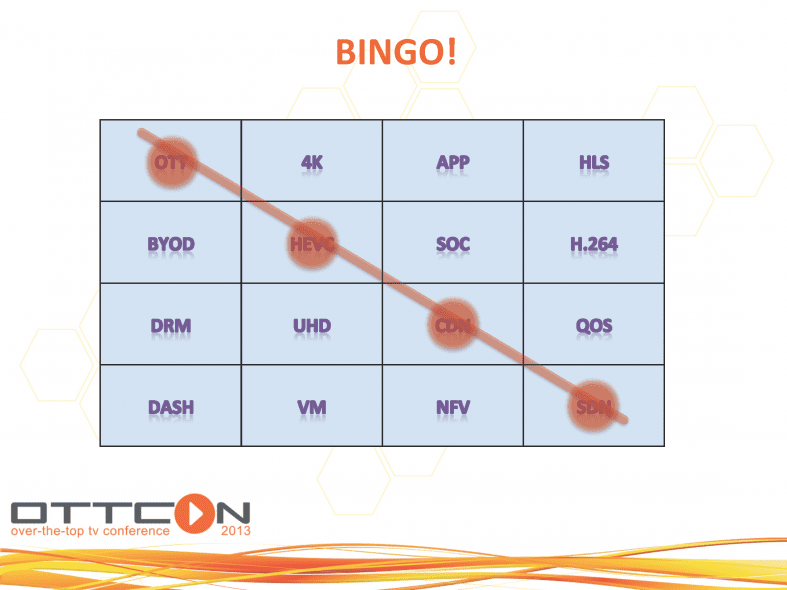Uncategorized
TiECON 2013 Preview & Insight; Discount for IEEE Members
• Jeff Weiner – CEO, LinkedIn
• Anand Chandrasekhar – CMO, Qualcomm
• Boyd Davis – GM, Intel Datacenter Software Division
• Chris Anderson – CEO 3D Robotics and former editor in chief, Wired magazine
• Rayid Ghani – Chief Scientist, Obama campaign,
• D. J. Patil – Formerly Chief Data Scientist, LinkedIn
• Ashish Thakkar – Founder, Mara Group
• Maya Strelar-Migotti – Vice President, Ericsson SV
• Ronnie Screwvala – Director, Disney-UTV
• Manoj Bhargava – Founder and CEO, 5-hour Energy
• Bharat Desai – Chairman and Co-Founder, Syntel
2013 Ethernet Tech Summit- Market Research Panel & Carrier Ethernet Comment
Introduction:
This session covered the prospects for Ethernet in the enterprise, among carriers (especially for cellular backhaul), and in the data center. The session was chaired by Crystal Black, Channel Marketing Manager, APTARE
Panelists:
-Michael Howard, Infonetics Research
-Casey Quillin, Dell’Oro Group
-Sergis Mushell, Gartner
-Jag Bolaria, Linley Group
-Vladimir Kozlov, LightCounting
The summary of this panel will be posted at viodi.com shortly
Comment: Surprisingly, there wasn’t any talk about the Carrier Ethernet market, which was the subject of an all day track at this conference. Carrier Ethernet lets carrier businesses use low cost Ethernet systems to offer data services with all the operation, administration and Maintenance (OAM) features and benefits, including QoS. Existing Carrier Ethernet Services include Private Line, Ethernet Tree (point to multi-point) and Ethernet LAN (multi-point to multi-point). In addition, the MEF is positioning Carrier Ethernet 2.0 for use in wire-line access to Private Cloud services.
The problem seemed to be that there weren’t any carriers willing to participate in those sessions, so it was just equipment and silicon vendors talking to one another.
A new report forecasts the Global Ethernet Access Device market to grow at a CAGR Of 13.62% from 2012-2016.
http://www.businesswire.com/news/home/20130411006525/en/Research-Markets-Global-Ethernet-Access-Device-Market
Another highlight of the Ethernet Technology Summit was a Wednesday evening award ceremony to the “Unsung hero’s of Ethernet,” chosen by the IEEE Santa Clara Valley (SCV) section. They were: Dave Boggs who worked with Bob Metcalfe on the original 3M b/sec Ethernet (and whose name appears on the Ethernet patent), Ron Crane who designed the first working 10 Mb/s coax based Ethernet adapter interface at Xerox (which later became standardized by IEEE 802.3 as Carrier Sense Multiple Access with Collision Detection (CSMA/CD) Access Method and Physical Layer Specifications or simply 10Base5) and also co-founded 3Com Corp, Tat Lam who worked on the original version of Ethernet and early 10 Mb/s transceivers and long time IEEE ComSoc contributor Geoff Thompson for his hard work, long term support and leadership of Ethernet standards work in IEEE 802 (he was chair/vice-chair of the 802.3 WG for many years), TIA and the ISO.
The Unsung Heroes of Ethernet etched crystal plaques were paid for by the IEEE SCV section (the largest IEEE section in the world). They include an image of Bob Metcalfe’s original sketch of the Ethernet system.
Editor’s Note: This author has been a member of the IEEE SCV Executive Committee for many years and decades. He nominated Ron Crane and Geoff Thompson for their Unsung Hero of Ethernet awards. More info at:
References:
A video of this session is available at: http://www.papitv.com/ethernet-technology-summit-market-research-marketsinvestors-track-the-panelist-video-by-kc-leung
2013 Ethernet Tech Summit Presentations can be downloaded from:
http://www.ethernetsummit.com/English/Conference/Proceedings_Chrono.html
Dish Network offers to buy Sprint for $25.5 billion cash and stock; DT/T-Mobile rumored to be interested too!
Satellite-TV provider Dish Network Corp. is making a $25.5 billion bid for Sprint Corp. in an effort to derail the No. 3 U.S. wireless carrier’s acquisition by Softbank Corp. of Japan. Dish said Monday it is offering to pay $4.76 in cash and about $2.24 in Dish stock, based on Friday’s closing price, for every share of Sprint. Dish argues that the deal represents a 13% premium to Softbank’s complicated proposal to buy 70% of Sprint for $20.1 billion.
Charlie Ergen, Dish’s Executive Chairman, has been looking for a way into the wireless world for years. Dish has been buying space on the airwaves for cellphone service or wireless broadband. The Englewood, Colo., company has tried to partner with cellphone companies to put its spectrum rights to use, but has been repeatedly rebuffed.
A Dish spokesman said it’s too early in the process to know a number of specifics including who would lead the company and whether Mr. Ergen will serve as chairman of the board. Sprint said its board of directors will evaluate the proposal carefully. Softbank had no immediate comment on the bid by Dish.
“Sprint is in play,” Mr. Ergen said in an interview with the Wall Street Journal in New York. “We think we’ve made an offer that’s much more compelling than the Softbank transaction.” Control of the combined company would rest with Dish shareholders, and Mr. Ergen would be its largest shareholder.
Buying Sprint would allow Dish to offer video, high-speed Internet and voice service across the country in one package whether people are at home or out and about, Mr. Ergen said. People who don’t have access to broadband from a cable company would be able to sign up for Internet service delivered wirelessly from Sprint cellphone towers to an antenna installed on their roof, Mr. Ergen said.
“You want to be in your home with video, broadband, and data, and voice, and you want to be outside your home with those same things,” Ergen said on a conference call. “And while the cable industry does a really good job in your home, and the current wireless industry does a really good job outside your home, there’s really no one company on a national scale that puts it all together. The new Dish-Sprint will do that.”
Earlier this year, Dish made an informal offer to buy Clearwire Corp. -a wireless carrier that is half-owned by Sprint and that has agreed to sell Sprint the other half. Dish has yet to move forward with a formal bid. Mr. Ergen said the “deck was stacked against us” with Clearwire due to a
tangle of contractual obligations. With Sprint, the only obstacle is a $600 million breakup fee that would be due Softbank. He said he is willing to pay that.
Sprint had $35.3 billion in revenue last year, compared with $14.3 billion for Dish. The combined company would carry more than $36 billion in debt, according to CapitalIQ, even before loading on the $9 billion Dish indicated it would borrow to do the deal. It will now be up to the Sprint board to decide whether Dish’s bid is superior to Softbank’s. If the board decides it is, Softbank will have an opportunity to increase its own offer.
Rethink Wireless reports that Deutsche Telekom is considering a separate deal with Sprint Nextel, which would improve its capex position for expanding its own LTE roll-out. DT owns T-Mobile, which is the 4th largest U.S. wireless carrier.
Dish and Sprint both held talks with MetroPCS before the T-Mobile deal was agreed, the sources say. DT last week improved the terms of its offer for MetroPCS to reassure major shareholders in the flat rate carrier, notably by reducing the debt burden on the combined entity, and the leading opponent of the proposal did reverse its position, raising hopes that the deal will be approved at a delayed shareholder meeting on April 24.
Not to be outdone, Telegeography weighed in with this rumor: “Charlie Ergen, chairman of US satellite TV giant DISH Network, reportedly approached Germany’s Deutsche Telekom (DT) regarding a possible merger with T-Mobile USA, albeit informally. According to Bloomberg, citing sources familiar with the situation, DISH made the proposal sometime before 10 April, when DT unveiled a ‘sweetened’ bid for merger target MetroPCS Communications. The sources, who wished to remain anonymous, added that DT might consider DISH’s proposal, although only after the transaction with MetroPCS closes, and after verifying that a separate deal with Sprint Nextel is not feasible.”
Read More at:
http://online.wsj.com/article/SB10001424127887324030704578424200831745578.html#printMode
http://www.reuters.com/article/2013/04/15/us-sprint-offer-idUSBRE93E0E620130415
http://www.rethink-wireless.com/2013/04/15/dt-talks-dish-sprint.htm
Cloud as IT Disrupter; SDN as a New Virtual Network Infrastructure
One consistent theme during the Cloud Connect 2013 conference was the cloud as a disrupter of IT organizations. During the Cloud Executive Summit workshop, Avery Lyford of LEAP Commerce said that there were three huge areas of disruption: the mobile cloud, big data (analytics) and Software Defined Networking (SDN). Each of these areas were then described by different speakers. We were especially impressed with the presentation by Andre Kindness of Forrester Research who stated that SDN is an evolution; not a revolution and it will take 5 to 7 years for the technology to mature. PLUMGrid’s SDN presentation was also very enlightening. It’s described later in this Cloud Connect wrap-up article.
UPDATE: AT&T Finally Launches Digital Life Home Security & Automation system; Emerging Devices & M2M Focus Intact
April 26, 2013 UPDATE: AT&T debuts Digital Life home network in 15 cities
AT&T is launching its Digital Life home security and monitoring service in 15 cities — some large, some midsize — with
plans to expand to 50 locations by midyear, the telecom says. In competing with companies such as ADT,
AT&T will allow people to use either mobile devices or PCs to keep an eye on various activities and appliances through Web-connected cameras and sensors hooked up to a broadband connection.
http://news.cnet.com/8301-1035_3-57581532-94/at-t-rolls-out-home-security-and-monitoring-service/
http://gigaom.com/2013/04/25/att-launches-its-internet-of-things-effort-and-its-pretty-big/
We previously wrote:
In January 2013, AT&T issued a press release indicating that their Digital Life Home Security and Automation system for “the connected home” would be available to consumers in March this year.
http://www.att.com/gen/press-room?pid=23652&cdvn=news&newsarticleid=35917
In mid-March of this year AT&T upped the number of cities it said would be covered at the outset from eight to 15. It has targeted availability in 50 cities by year end.
http://www.att.com/gen/press-room?pid=23947&cdvn=news&newsarticleid=36199
AT&T told Telecoms.com that demand following trials in two US cities [Atlanta and Dallas] led to an expansion of launch plans. “In response to customer feedback we’re nearly doubling the number of cities where we plan to introduce Digital Life,” the firm said. “As a result, we’re adjusting the launch timing. This allows us to align our marketing and operational plans to accommodate the expanded launch. We will share pricing details when we launch the service this spring.”
But the Digital Life page on AT&T’s website currently displays a static form inviting prospective customers to register for details of future availability in their home area. https://my-digitallife.att.com/support/digitallife
Digital Life will be based around home security and monitoring solutions initially, before expanding into areas like utility management. It will compete with similar connected home automation systems from Verizon and Comcast. Subscription security services in the US have a far lower churn rate than wireless/mobile services. Industry averages for home security system customer lifecycle was said to be on the order of six to seven years.
“AT&T Digital Life is a game-changing wireless centric home security and automation experience with its unique integration and an intuitive app to control every feature from your smartphone, tablet or PC,” said Kevin Petersen, senior vice president, AT&T Digital Life. “Combined with AT&T’s wireless network (http://www.att.com/gen/press-room?pid=2943) and unparalleled distribution channels, Digital Life will offer exciting new innovation. We can’t wait to get it into the hands of our customers.” In providing an end-to-end security solution, from hardware distribution and retail to installation and after sales support, AT&T aims to “disrupt and remake the security industry,” Peterson said.
AT&T has not revealed the value of its investment in Digital Life, the scope of the project is extensive. The firm acquired and then internally developed its own management platform for the security service, has built its own monitoring centres and dedicated support facilities and will source third party providers trained to install domestic equipment. These installers will ensure the devices’ connection to AT&T’s network and leave customers’ homes with the end users fully able to manage their new security solution through AT&T’s bespoke, multi-platform User Interface, according to Peterson.
A typical installation could require 30 or 40 devices, Peterson told Telecoms.com.
“We’ll subsidise the upfront cost of the kit and installation in exchange for two-year contracts,” he said. “We’ll be very competitively priced upfront, we’ll give lifetime warranties on the services and equipment and we’ll be very competitive on the monthly fee.” AT&T’s costs will be offset by an international licensing strategy that exploits “owners economics” Peterson added.
AT&T executives have repeatedly touted home security and automation as one of the company’s new growth opportunities for “emerging devices,” M2M, and the Internet of Things (IoT). AT&T stated it has been an innovative, proactive, early leader in machine-to machine (M2M) communications and sees exciting potential in this market. The company’s goal is to “help drive wireless capabilities into a wide variety of devices beyond traditional handsets for businesses. AT&T is driving the emergence of new categories of devices and applications that are enhanced by wireless network connectivity. This will create new categories of devices and applications, both for consumers and businesses,” according to AT&T’s website: http://www.att.com/Common/about_us/files/pdf/emerging_devices/M2M_Snapshot.pdf
Other emerging device applications that AT&T is working on (with partner companies) include the connected car, mobile healthcare/eHealth and mobile safety. In addition to a global 3G and 4G-LTE cellular network, AT&T has the nation’s largest Wi-Fi network with nearly 27,000 hotspots in the U.S. Emerging devices could connect to those networks or even wire-line networks for M2M communications.
AT&T Media kit for “emerging devices” is at: http://www.att.com/gen/press-room?pid=13434
For more information, please visit:
http://www.telecoms.com/134701/att-delays-m2m-home-security-launch/?
http://www.fiercewireless.com/story/att-remains-silent-digital-life-launch-delay/2013-04-08
http://www.business.att.com/enterprise/Family/mobility-services/machine-to-machine/
http://www.business.att.com/enterprise/Service/mobility-services/machine…
Highights of 2013 Cloud Connect Conference: April 2-5, 2013 in Santa Clara, CA
We also examine how the Mobile Cloud has and will continue to change business operations. It’s a balancing act, with compromises needed between corporate compliance/security vs worker freedom/convenience.
The Mobile Cloud:
Before the end of this year there will be more smart phones than PCs, and in 2015 there will be more tablets than PCs as shown in the illustration below.

Mobile and cloud are combining to change how the underlying infrastructure of business. Mobile and cloud combine to change how applications are developed, tested and distributed. Mobile changes what features and user experience exists in applications while cloud changes where data should be located and how it will be accessed. Security and management will also change as businesses embrace mobile. Applications will be device aware, location aware and network/cloud aware. But they have to be purpose built, i.e. desktop/workstation apps won’t run on mobile computing platforms- even with 4G access. And because the demand for mobile cloud resident apps is uncertain, the mobile cloud must be very flexible in scaling up or down to accomodate the actual number of users for all the mobile apps being supported.
Going forward business processes will assume a multi-device landscape, cloud connectivity. Mobile work styles are becoming the rule rather than the exception in Enterprise IT and traditional methods of securing data behind VPNs will fall short as employees demand business tools that are as easy to use and frequently updated as the ones they use at home. Unfortunately, legal and regulatory requirements for securing data are no less stringent than they were before the mobile era. There are compliance issues with laws such as HIPAA and FINRA that apply to data sync and sharing of information/digital content.
In the future, companies will rebuild transform business applications to take advantage of a range of by using contextual data from all connected devices, including location, time of day, presence and device type. Sensors in the latest devices will also also provide contextual information such as temperature, humidity, motion, and orientation. Applications based on business critical data from connected sensors will be used by many industries, with utility, oil and gas industries leading the way. Transforming business will require businesses to use the cloud and big data processing to turn mobile data into insight in real-time.
In an excellent presentation by Jesse Lipson, Citrix VP of Data Sharing, Managing Data in the Cloud said: “VPNs are going away.They are clumsy and incovenient for mobile users.” Other reasons: there’s more IP outside of the firewall, Mobile Device Management (MDM) and simpler two factor authentication are combining to alleviate the need for VPN access. Mr Lipson also sees several new trends as a result of mobile data tsunami:
-Active Directory Integration with Single Sign On (e..g. SAML 2.0)
-2 factor authentication going away; perhaps replaced by text message authentication
-Auto Log-In from mobile devices, especially smart phones
-On premises storage alive and well due to security, compliance, convenience, and ability to access existing data stores
-“Open-in…” enable another application to open in the application being run
-Device control via MDM software deployed on all enterprise owned mobile devices
-Other mobile devices, especially laptops are getting more attention for security and control
In the end, enterprise control of mobile devices, data and apps is a balancing act between corporate compliance and security vs employee convenience and productivity (see illustration below). Each organization must decide how to chose the necessary tools, methods and procesures to ensure that both objectives are met.
2013 Cloud Connect Part II is at:

M2M Market Opportunities, Challenges, Strategies, Industry Verticals and Forecasts
Introduction:
Signals & Systems Telecom (SNS Telecom; http://www.snstelecom.com/) has just released a report on the Machine-to-Machine (M2M) communications market. The report presents an in-depth assessment of the global wireless M2M market. In addition to covering the business case, the challenges, the industry’s roadmap, value chain analysis, deployment case studies, and the vertical market ecosystem, vendor service/product strategies and strategic recommendations, the report also presents comprehensive forecasts for the wireless M2M market from 2013 till 2018, including an individual assessment of the following submarkets: Network Connectivity, Application Services, Embedded Cellular M2M Modules, Network Security, Connected Device Platforms (CDP), Application Platforms (Application Enablement Platforms, AEP and Application Development Platforms, ADP), Integration Services and Enabling Technologies, across six regions.
Also provided are network connectivity and application service revenue forecasts for the following 6 vertical market segments: Utilities & Smart Grid, Automotive & Transportation, Logistics, Public Safety, Security & Surveillance, Retail & Vending and Healthcare. Historical figures are also provided for 2011 and 2012.
Overview:
Despite its low ARPU, the wireless M2M market has become a key focus of many mobile network operators as their traditional voice and data markets become saturated. Likewise, government and regulatory initiatives such as the EU initiatives to have a smart meter penetration level of 80% by 2020 and the mandatory inclusion of automotive safety systems such as eCall in all new car models, have also helped to drive overall wireless M2M connections and revenue.
Consequently we expect the wireless M2M market to account for nearly $136 billion in revenues by the end of 2018, following a CAGR of 23% during the five year period between 2013 and 2018. Eyeing this lucrative opportunity, vendors and service providers across the highly fragmented M2M value chain have become increasing innovative in their strategies and technology offerings which have given rise to a number of submarkets such as M2M Network Security, Connected Device Platforms (CDP) and M2M Application Platforms.
Key Findings:
* The wireless M2M market will account for nearly $136 billion in annual revenues by the end of 2018, following a CAGR of 23% during the five year period between 2013 and 2018
* At present, the M2M value chain is highly fragmented with module OEMs, hardware solution providers, application platform providers, device platform providers, and mobile network operators and aggregators/MVNOs all investing across multiple segments of the value chain, whilst still maintaining a key focus on a specific portion
* Signals and Systems Telecom expects the value chain to consolidate in the future, with a smaller number of larger and profitable competitors across the M2M value chain
* The growing presence of wireless M2M solutions within the sensitive critical infrastructure industry is having a profound impact on M2M network security services, a market estimated to reach nearly $1 billion in annual spending by the end of 2018
* Driven by demands for device management, cloud based data analytics and diagnostic tools, M2M software platforms (including CDP, AEP and ADP) are expected to account for $6 billion in annual spending by the end of 2018
Key Questions Answered:
* What are the key market drivers and challenges in the wireless M2M ecosystem?
* What are the key applications of M2M across industry verticals?
* How is the M2M value chain structured, how will it evolve overtime, and what will be its impact on key vertical segments of the market?
* What opportunities does M2M technology offer to mobile network operators and other players involved in the value chain?
* What strategies should mobile network operators/MVNOs, module vendors, hardware solution providers, software platform providers and other players adopt to capitalize on the M2M opportunity?
* How big is the M2M opportunity, and how much revenue will the industry generate in 2018?
* What will be the installed base of wireless M2M connections in 2018?
* Which geographical regions and industry verticals offer the greatest growth potential for M2M services?
* What is the vendor market share embedded cellular M2M modules, how many units will ship in 2018 and how will declining ASPs impact the sales revenue?
* How will embedded cellular M2M module shipments vary by air interface technology overtime, and will LTE take a lead in 2018?
* What is the network connectivity and application service ARPU for M2M services, and how will this vary overtime for each industry vertical?
* How big is the market for M2M network security and software platforms?
For more information, including report pricing, please contact Andy Silva: [email protected]
Other SNS Telecom reports are listed at: http://www.snstelecom.com/reports-library
Another recently released M2M report was by Research & Markets:
M2M: The Next Billion Mobile Connections – Essential Analysis of the Growing Wireless M2M Industry
In that report, Parks Associates analysts examine the growing wireless M2M industry and highlight opportunities in this space for mobile service providers in the U.S. and globally. The report includes a comprehensive overview of the complex M2M ecosystem, profiles of leading M2M vendors, and analysis of carriers’ M2M strategies. The report also illuminates important trends in key verticals and provides a forecast of carrier-enabled device connections through 2016.
“Mobile service providers are facing declining revenue from traditional voice and SMS services and mobile data traffic growth that outpaces growth in data revenues,” said Jennifer Kent, research analyst, Parks Associates. “In search of new opportunities, mobile service providers are expanding their presence in the Machine-to-Machine (M2M) space. Widespread consumer and enterprise adoption of broadband Internet service, wireless routers, and devices with mobile connectivity means the ingredients are there for the M2M market to take off. Plus, mobile network operators have unique assets that position them to take advantage of the growing M2M market.”
http://www.researchandmarkets.com/research/5p8vdb/m2m_the_next
Sprint in Deal with U.S. Law Enforcement to Restrict China Gear, especially from Huawei
Seeking to address national security concerns, Sprint Nextel and SoftBank, its Japanese suitor, are expected to enter an agreement with American law enforcement officials that will restrict the combined company’s ability to pick suppliers for its telecommunications equipment and systems, government officials said on Thursday.
The agreement would allow national security officials to monitor changes to the company’s system of routers, servers and switches, among other equipment and processes, the officials said. It would also let them keep a close watch on the extent to which Sprint and SoftBank use equipment from Chinese manufacturers, particularly Huawei Technologies. The government officials spoke about the possible agreement on the condition of anonymity because negotiations are continuing. SoftBank, one of Japan’s biggest cellphone companies, is offering to buy majority control of Sprint for $20.1 billion.
While common to most technology investments in the United States by foreign companies, such agreements have come into sharper focus recently because of accusations by United States government officials of espionage by foreign countries.
SoftBank and Sprint have already assured members of Congress that they will not integrate equipment made by Huawei into Sprint’s United States systems and will replace Huawei equipment in Clearwire’s network. Clearwire is a discount cellphone firm Sprint is seeking to buy.
Masayoshi Son, the Chairman and CEO of SoftBank; Daniel Hesse, CEO of Sprint; and Erik Prusch, CEO of Clearwire, jointly sought to reassure United States officials that the merged company would take the steps necessary to ensure that its networks would not endanger United States communications networks.
Representative Mike Rogers, Republican of Michigan and chairman of the House Permanent Select Committee on Intelligence, said on Thursday that he also met this month with the company executives, who promised him that they would not use equipment from Huawei.
“I expect them to make the same assurances before any approval of the deal” by national security officials, Mr. Rogers said. “I am pleased with their mitigation plans but will continue to look for opportunities to improve the government’s existing authorities to thoroughly review all the national security aspects of proposed transactions.”
A recent report by the intelligence committee identified Huawei and the ZTE Corporation, another Chinese equipment provider, as possible security risks. The report cited the companies’ potential ties to Chinese intelligence or military services.
References:
http://arstechnica.com/security/2013/03/sprint-softbank-to-shun-chinese-networking-equipment/
Technologies that will offer higher quality viewing experience & enable new OTT services



Oracle Acquires Tekelec to Pursue Telco Market: Manage, Control & Analyze IP Traffic
Less than two months after buying Acme Packet, Oracle has announced that it has agreed to acquire Tekelec, a leading provider of network signaling, policy control, and subscriber data management solutions for communications networks. The company has also been an innovator in IP traffic shaping.
Tekelec specializes in critical elements of the modern IP carrier network where the networking and IT software operations converge. This is the area where Oracle sees its opportunity to expand in the telco market – by bringing its data center and IT systems to telecos and taking on incumbent telco vendors like Ericsson.
Financial terms of the deal were not disclosed. Tekelec has been considered a potential acquisition target since it went private in November 2011. It was then acquired by a group led by private equity firm Siris Capital for $761m, a deal which many believed undervalued the company. Tekelec made a name for itself in the 1980s and 1990s by specializing in test equipment and then converting to a VoIP software company.
Last month, Oracle paid $1.7bn for Acme Packet, which specializes in VoIP and IP traffic equipment, notably session border controllers. We analyzed that transaction in this article: https://techblog.comsoc.org/2013/02/04/oracle-buys-acme-packet-for-2-1-billion-to-provide-converged-systems-solution
It appears that Oracle is building a group of software technologies which help network operators control and manage IP traffic and analyze it in detail, in order to impose policies such as offload or premium charging – increasing the ability to monetize the exploding traffic. In particular, it is now a major force in signalling, taking players like F5, which acquired Diameter specialist Traffix over a year ago. With the Tekelec and Acme Packet acquisitions, Oracle will be in a better position to compete with Cisco Systems, which has recently bought policy management firm BroadHop.
“In an increasingly mobile and social world, customer experience is about optimizing network performance and personalizing services based on what engages, moves, and inspires people,” said Ron de Lange, president and CEO, Tekelec, in a statement. “Together with Oracle, we expect to accelerate the pace of service innovation by helping service providers transform the way they manage and monetize the explosive growth in signaling and data traffic on their networks.”
“Oracle has in the past partnered to provide these capabilities, but by bringing them in house it will have more opportunity
to shape the roadmap and combine the capabilities in a more tightly-coupled solution,” wrote Ovum principal analyst Dana Cooperson in a research note. “Expect Oracle’s telecom focused competitors (Alcatel-Lucent, Huawei, Ericsson) and its IT-focused competitors (HP, SAP, SAS Institute) to do more strategic soul searching and, as their financial situation allows, to pursue acquisitions of their own.”
“As connected devices and applications become ubiquitous, intelligent network and service control technologies are required to enable service providers to efficiently deploy all-IP networks, and deliver and monetize innovative communication services,” said Bhaskar Gorti, general manager of Oracle Communications, in a statement.
In addition to its software products, Tekelec owns hundreds of patents and applications in the communications space. This is an area that Oracle has not hesitated to explore in the courtroom, and given the billion-dollar-plus sums involved in some patent battles, this could have bumped up the pricetag for Tekelec somewhat higher.
References:
http://www.oracle.com/us/corporate/acquisitions/tekelec/index.html
http://www.rethink-wireless.com/2013/03/26/oracle-bolsters-telco-assault-tekelec-buy.htm


